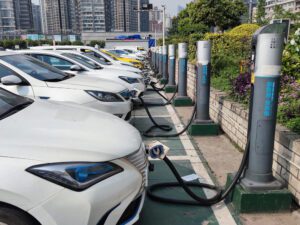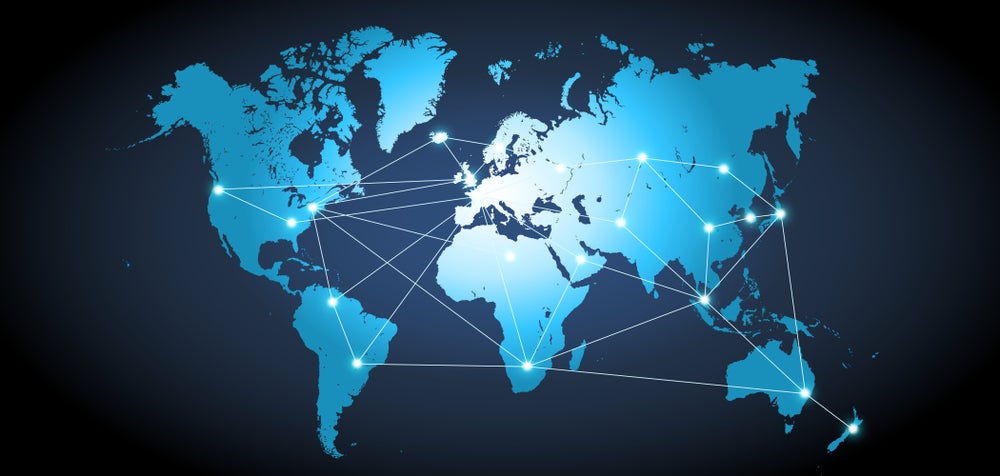On August 3, Wendy Cutler took part in a joint WITA-Asia Society Policy Institute webinar looking at the rise of Chinese electric vehicles. That discussion can be viewed here. Following is her most recent piece on this subject.
Amid resounding applause from the European parliament, Commission president Ursula von der Leyen recently announced the initiation of a subsidies investigation into China’s unfair trade practices in the electric vehicle sector.
This was a bold move in light of possible retribution against European car and other companies operating in China. Recalling how Chinese unfair and predatory practices led to the demise of the European solar industry, von der Leyen stressed the urgency for Europe to pre-empt a similar fate in the auto sector.
The EU’s move will hopefully lead US policymakers to evaluate their own policy tools and develop a proactive response.
Over the past decade, the Chinese EV industry has benefited from massive state subsidies and other government support. This paved the way for the country to become the largest global vehicle exporter this year, surpassing Germany and Japan. “New energy vehicles and equipment” was one of the 10 technology sectors targeted for global leadership in Beijing’s Made in China 2025 policy.
Moreover, China has strategically secured critical mineral deposits around the world needed for battery production, such as lithium. That means for several years Beijing has been able to dictate that EVs use Chinese-made batteries, which account for up to 60 per cent of the value of a car. While China has the world’s largest domestic automotive market at some 26mn vehicles, its EV companies are producing way more than the domestic market can consume — an excess of as much as 10mn a year, according to some estimates.
In many respects, the EV playbook looks similar to those followed by Beijing in developing its solar, steel and aluminium sectors. In those industries, massive subsidies led to overproduction and excess supply, saturating global markets and crippling international competitors. The oversupply of EVs has already found its way to Europe and many other corners of the world.
So far, the US has been spared an influx of Chinese cars due to a number of factors. First, the American tariff of 27.5 per cent (a 2.5 per cent toll on all auto imports plus the 25 per cent China import-specific one) is relatively high. Second, Chinese vehicles are ineligible for consumer EV tax credits under the Inflation Reduction Act, disadvantaging them in the US market. Third, geopolitical tensions are likely to have steered Chinese auto manufacturers away from the American market.
But there is no guarantee that this situation will continue, particularly as Chinese companies face rising pressure to offload their excess production. As a result, it’s in the US interest to act early.
|
Following is an excerpt from a lecture given by Alan Wolff, at the Graduate Institute and the University of St. Gallen, Geneva, Switzerland
The notion that international trade can foster peace lost currency as the two world wars of the last century faded from memory, and whatever remained of the theory’s credibility was largely extinguished when, in 2022, for the first time one WTO Member invaded another on the European continent. Apparently debunked was the policy of Wandel durch Handel (WdH, German for “change through trade”)? Also known as Wandel durch Annäherung, it refers to a central political and economic element of German foreign policy that the European Union had also largely adopted, of increasing trade with authoritarian regimes in an effort to induce political change in the direction of creating a safer global environment.
Now, the issue is in sharper relief once again, as the Russia-Ukraine war has blocked shipping through the Black Sea, cutting off wheat, sunflower oil and fertilizer shipments, driving up food costs and curtailing physical supplies of these commodities. The intimate relationship between trade and peace is being demonstrated once again with the importance of moving food from areas of surplus to world markets and to those in need. During the 2008 financial crisis, spikes in food prices led to political unrest and violence in northern Africa among other places. Land transportation is at risk – trains and trucks may be interdicted. Some of the warehouses of the World Food Programme (WFP) are empty, with the result that those who were hungry before may be left starving. Even were war to end sooner rather than later, wheat fields are mined, crops are not planted in the war zone, and the logistics of moving grain from other safe sources are not completely flexible. Transportation for Canada’s export crops is aimed westward across the Pacific and not eastward toward Europe and Africa.
There is nothing more basic to the human condition than food. Constraints on food supplies and unaffordable prices drive political unrest and can sow the seeds of war.
Trade can produce greater harmony or greater friction. Where there is big-power geopolitical rivalry, the rivalry itself is likely to dominate the challenge of maintaining peace. This is true with respect to Russia and the West, and it can become the case between China and the West. Trading relations will be uneasy, used to coerce, used to limit goods in the name of national security, and used to build a closer alignment of interests.
There is, however, also an area where there is more conviction and less doubt about whether trade can serve a predominantly positive outcome for peace-related objectives. This is to be found with respect to fragile and conflict-affected countries. For these countries, trade can serve as an enabler for peace. To assure that this is the case, the trade and peace communities must bring the trade-peace connection to the attention of both trade negotiators and peace negotiators. This collaboration has historically been difficult to achieve.
|
Global trade and investment flows are increasingly affected by unilateral policies, ranging from export controls to industrial subsidies. Such policies are implemented by major trade powers, often motivated by non-economic objectives such as safeguarding national and economic security, combatting global warming and defending social values.
These policies create uncertainty, increase investment risk premiums and distort trade. World Trade Organization (WTO) members can justify unilateral action to achieve non-economic objectives by invoking general or essential WTO security exceptions. But widespread recourse to these provisions constitutes a major threat to the rules-based trade order. For the rules to function there must be general acceptance of norms of good behaviour. Those norms are violated when public morals or economic security become a cover for unilateral discriminatory trade policies.
What possible paths forward are there on multilateral trade cooperation?
The erosion of trust among the large economic powers, reflected in their increased willingness to ‘weaponise’ trade policy, is a major constraint to launching negotiations on new rules of the trade game. Instead, strategic autonomy, economic security and other non-economic objectives motivate calls for collaboration among countries with similar values and political-economic systems.
For the WTO to remain relevant in the 21st century, members have to recognise that international trade increasingly is linked to systems competition, cooperation and contestation over non-economic objectives — for which trade is seen as instrumental to policy success. The use of dispute settlement procedures, especially in cases where essential security interests are invoked, is likely to be both counterproductive and ineffective.
Efforts to safeguard an open global trade regime should instead centre on processes through which WTO members engage in policy dialogue. Institutionally supported frameworks must enable peer-based deliberation to assess the effectiveness and efficiency of the unilateral pursuit of non-economic objectives and their associated spillovers, which may be positive or negative. Such dialogue is necessary to inform the multilateral cooperation needed to address the major threats and collective action problems confronting the global community.
|
|
|
Excerpts from a piece by Sandra Lavenex, Philipp Lutz, & Paula Hoffmeyer-Zlotnik in The Review of International Organizations.
States struggle to establish multilateral cooperation on migration – yet they include more and more migration provisions in preferential trade agreements (PTAs)….
Unlike other non-trade issues, such as human rights or environmental protection, migration has seen little codification in multilateral treaties. Although two UN compacts on migration and refugees concluded in 2018 emphasize the need for closer international cooperation, states have remained reluctant to concede national sovereignty over the admission of foreigners and to make binding commitments.
Existing international norms date back to the post-World War II period and concentrate on states’ responsibilities towards refugees (the 1951 Geneva Convention and its 1967 Protocol) and migrant workers (the poorly ratified 1949 and 1975 Conventions of the International Labor Organization and the 1990 UN Convention on the Protection of the Rights of All Migrant Workers and Members of their Families, UNCMRW).
However, two core aspects of migration policy—the admission of economic migrants and the control over irregular migration—are widely considered “the last bastion of state sovereignty.” The only exception is a limited set of commitments that facilitate the mobility of “natural persons” moving for commercial purposes, which were established in the WTO’s 1995 General Agreement on Trade in Services (GATS) and are commonly referred to as “mode four” liberalization. International cooperation on migration has progressed more at the regional level and through various bilateral arrangements, including bilateral labor agreements, readmission agreements, more informal ‘migration diplomacy’ and, as we show below, PTAs.
Provisions that facilitate labor mobility, protect migrant rights or foster migration control relate to PTA’s general objectives to different extents. Labor mobility is inherent to market integration, and the GATS recognizes the economic value of facilitating the cross-border movement of persons who deliver services. The rights of migrant workers can be seen both as a corollary of labor rights that have been included as safeguards against the potential negative externalities of free trade on labor, and as a commitment to ensuring the social and economic rights of PTA partner countries’ citizens abroad. The third type of migration provisions in PTAs,—the parties’ commitment to fight irregular migration—cannot be related to improving their commercial relations, nor to addressing the externalities of the trade agreements, and therefore constitute the most unexpected migration policy content in PTAs.
These three types of migration provisions relate to distinct areas of states’ immigration policies and invoke different logics and dilemmas of international cooperation. In the following subsections, we briefly present these provisions before investigating the patterns of their distribution in PTAs.
|
|





